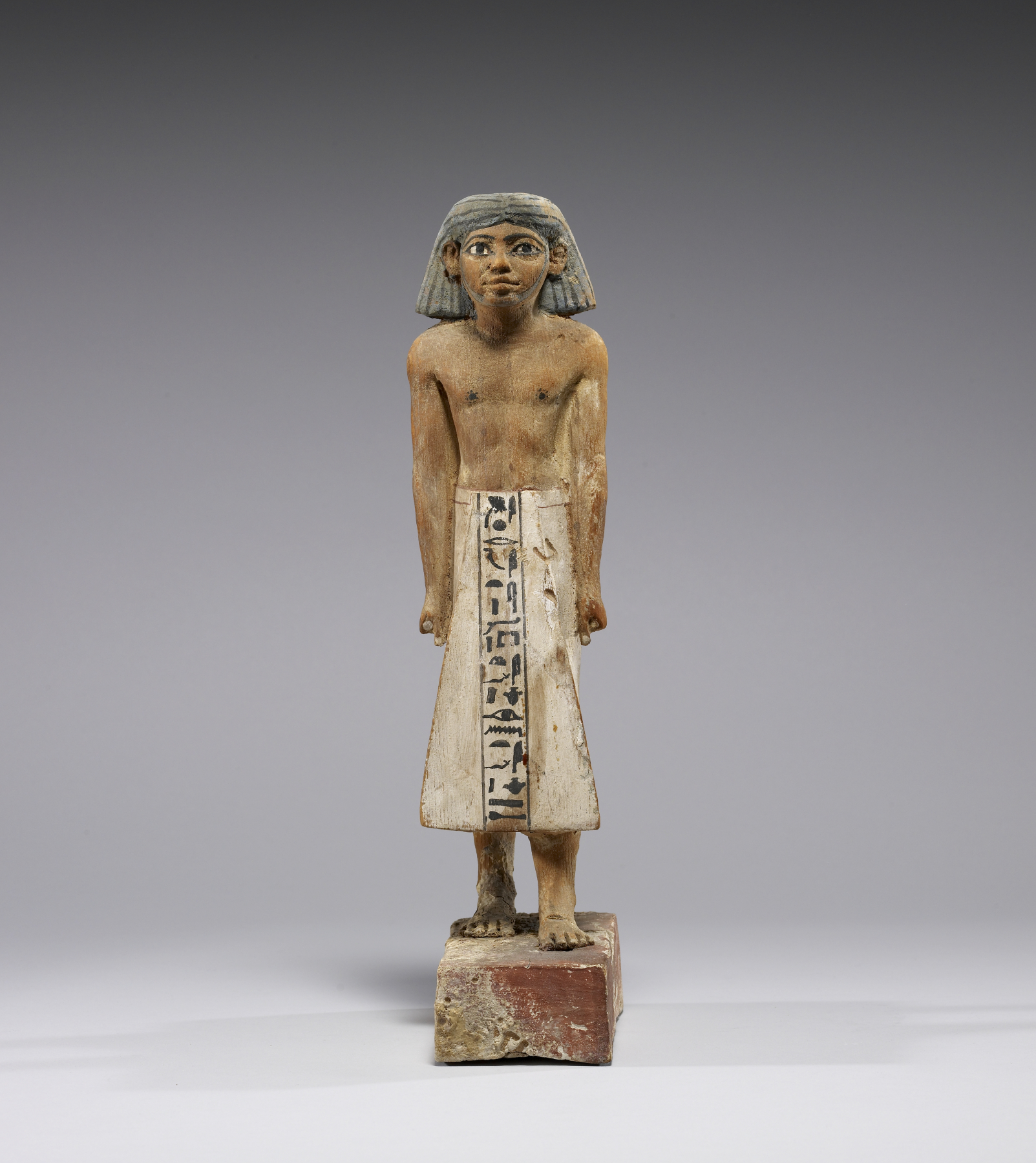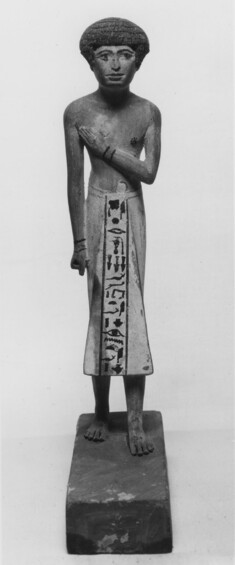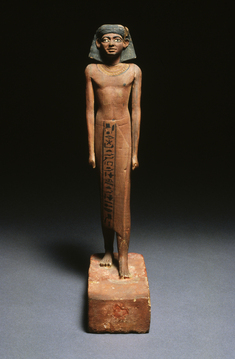Statue of Tef-ib
(Ancient Egypt and Nubia )
Tombs sometimes contained more than one statue representing the owner. The statues were usually inscribed with the owner's name and titles, and they served as a focus for funerary rituals. These examples, belonging to a man named Tef-ib, are unusual in that they represent the tomb owner while also bearing inscriptions referring to the four sons of Horus, who protected the internal organs of the deceased. These deities were also identified with the north, south, east, and west, and the statues may have been placed in the tomb in accordance with these directions. The differing facial features of these statues (including Walters 22.10, 22.12, 22.13) suggest that they were made by more than one artist. Notice as well, the sizes of the four figures differ as well as their wigs.
Inscription
Provenance
Provenance (from the French provenir, 'to come from/forth') is the chronology of the ownership, custody, or location of a historical object. Learn more about provenance at the Walters.
Dikran Kelekian, New York and Paris, [date and mode of acquisition unknown]; Henry Walters, Baltimore, 1924, by purchase; Walters Art Museum, 1931, by bequest.
Conservation
| Date | Description | Narrative |
|---|---|---|
| 1/1/1998 | Examination | survey |
| 7/31/1998 | Examination | survey |
Measurements
14 9/16 x 3 1/2 x 7 in. (37 x 8.9 x 17.8 cm)
Credit Line
Acquired by Henry Walters, 1924
Location in Museum
Accession Number
In libraries, galleries, museums, and archives, an accession number is a unique identifier assigned to each object in the collection.
In libraries, galleries, museums, and archives, an accession number is a unique identifier assigned to each object in the collection.
22.11







